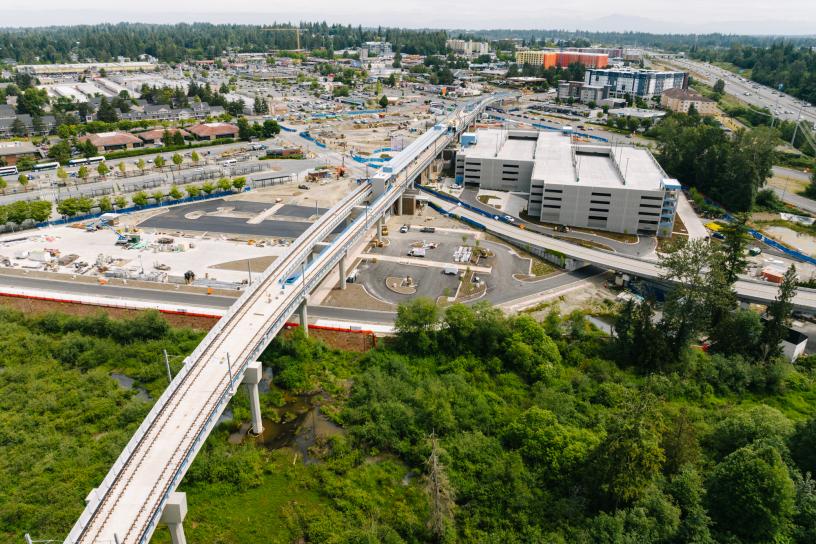What is LEED?
Leadership in Energy and Environmental Design, or LEED, certification is the most widely used green building rating system in the world. This system informs, benchmarks, and celebrates sustainability goals and achievements by organizations.
LEED requirements span location and transportation, sustainable sites, water efficiency, energy and atmosphere, materials and resources, and indoor environmental quality. The LEED framework helps buildings stay healthy, efficient, and cost-saving.
LEED-certified stations
Angle Lake Station
Angle Lake Station, located in the city of SeaTac, achieved LEED Gold certification in 2017. The elevated station, which includes a guideway, garage, and pedestrian plaza, was the first design-build project completed by Sound Transit.
Several sustainability features have been incorporated into the design, including two solar arrays totaling 64 kilowatts. When not in use, escalators from the platform to a plaza area reduce their speed to conserve energy. There are four charging stations for electric vehicles in the garage, and storage is available on site for 52 bicycles.
Lynnwood City Center Station
Lynnwood City Center Station, which will open Aug. 30, 2024, achieved LEED Gold certification in 2024. The certification is for the entire campus, including the station, parking garage, and public plaza areas. The certification recognized several areas of achievement, including the quality of the transit connections at the station, protection of habitat including restoration of Scriber Creek, energy efficiency of lighting and mechanical systems, and diversion of construction waste. The station also features these improvements:
- 85% of open space is covered in vegetation via pedestrian promenade, walkways, bike trails, and planting areas.
- 81% of construction waste has been diverted from landfills.
- 100% of paints, coatings, adhesives, sealants, flooring, ceiling, and insulation met LEED low-VOC requirements.
Specific resource and utility achievements include:
- A 30% energy cost reduction with advanced metering for real-time monitoring.
- A 34% reduction in indoor water use through efficient fixtures.
- A 71% reduction in irrigation water use through native, drought-tolerant plant species.



